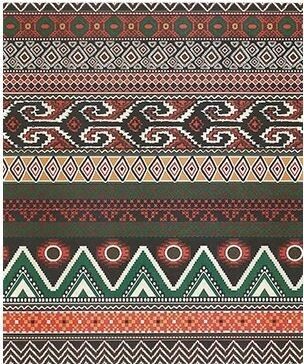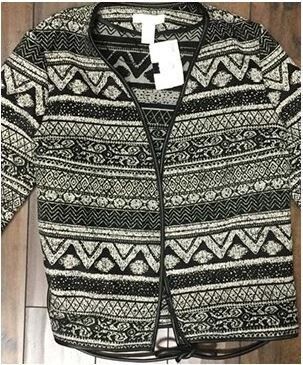In a recent showdown between fashion designer Unicolors, Inc. and clothing retailer H&M, the Ninth Circuit reversed a finding that H&M infringed one of Unicolors' fabric designs, addressing three important tenets of copyright registration in the process. First, to invalidate a copyright registration, there is no requirement that the registrant had an intent to defraud the Copyright Office. Second, when seeking a "single-unit registration" of multiple works, those works must be published as a singular, bundled unit. And third, when seeking to invalidate a registration for known inaccuracies contained in a copyright registration, the Copyright Office, not a court, must first consider whether those inaccuracies, had they been known at the time of registration, would have caused the Copyright Office to refuse registration.
Unicolors creates fabric designs for use on various textiles and garments, and its business model is simple: (1) create the artwork; (2) copyright the artwork; (3) print the artwork on fabric; and (4) market the artwork. Most of Unicolors' designs are marketed to the public, but some designs, called "confined" designs, are created for specific customers and are not made public for a few months to give the specific customer time to exclusively use the confined design.
Unicolors often registers many of its designs with the Copyright Office in a "single-unit registration" to save filing fees. In February 2011, Unicolors applied for and received a single-unit copyright registration—Reg. No. VA 1-770-400 (the "'400 Registration")—containing thirty-one separate designs, including design EH101 (the design at issue), twenty-two of which were non-confined works and nine of which were confined works. The '400 Registration claimed a first publication date of January 15, 2011, which represented the date all thirty-one of the designs were presented internally to Unicolors' salespeople but only the twenty-two non-confined designs were made "available for public viewing."
For its part, H&M owns and operates hundreds of clothing retail stores throughout the United States. In fall 2015, H&M began offering apparel bearing the "Xue Xu" design. After discovering the Xue Xu design, Unicolors sued H&M for copyright infringement, alleging that H&M's Xue Xu design was substantially similar to and infringed Unicolors' EH101 design, as shown below:
 |
 |
Unicolors EH101
Design | H&M Xue Xu
Design |
After a full jury trial, the jury found that Unicolors owned a valid copyright in the EH101 design, H&M infringed that copyright with its Xue Xu design, and H&M's infringement was willfull. As a result, the jury awarded Unicolors $817,920 of H&M's profits and $28,800 in lost profits. The district court also required H&M to pay Unicolors attorneys' fees and costs, which amounted to $508,709.20 and $5,856.27, respectively. H&M appealed both the unfavorable judgement and award of fees and costs to the Ninth Circuit.
To establish copyright infringement, a plaintiff must prove (1) ownership of a valid copyright and (2) that defendant copied the constituent elements of the copyrighted work that are original. On appeal, the Ninth Circuit exclusively focused on whether Unicolors owned a valid copyright.
Generally, possession of a copyright registration, as Unicolors has here, satisfies the first element of copyright infringement because copyright registrations are imbued with a presumption of validity. But where the registrant secured the copyright by knowingly including materially inaccurate information in the copyright application, the possession of a registration will not satisfy the ownership requirement. This is where H&M, and the Ninth Circuit, rested their proverbial hats.
H&M argued that because the '400 Registration was a single-unit registration, all of the works must have been first sold or offered for sale together. And because Unicolors testified at trial that the nine confined works included in the '400 Registration were not first offered together with the twenty-two non-confined works published on January 15, 2011, H&M contended that the '400 Registration was obtained by including inaccurate information and should be invalidated.
The Central District of California rejected this argument for two reasons. First, it found that Unicolors had no intent to defraud the Copyright Office. Second, it held that merely because the works included in the '400 Registration were marketed and sold separately did not mean they were not all published on the same day. The Ninth Circuit found the District Court's reasoning flawed on both accounts and, in doing so, clarified three important issues of copyright registration.
First, the Ninth Circuit held there is no intent-to-defraud requirement to invalidate a copyright registration. In other words, as applied to this case, the inquiry is not whether Unicolors knew the '400 Registration would run afoul of the single-unit registration requirements, but whether it knew that certain designs were confined and published separately from the non-confined designs, which Unicolors readily admitted to at trial.
Second, the Ninth Circuit clarified the requirements for a single-unit registration. According to the Copyright Act, for otherwise self-contained works to qualify for registration as a single-unit registration, they must be included "in a single unit of publication." 37 C.F.R. § 202.3(b)(4)(i)(A). The Ninth Circuit zeroed in on the words "singly unit of publication," and determined that "a work does not qualify as a 'single unit of publication' unless all individual works of the collection were first published as a singular, bundled unit. Applying this principle, the Ninth Circuit found that it was an inaccuracy for Unicolors to register the thirty-one designs in the '400 Registration as a single unit because they were not so published.
Third, having determined there was an inaccuracy in Unicolors '400 Registration, the Ninth Circuit refused to invalidate the '400 Registration and grant H&M judgment as a matter of law because, according to 17 U.S.C. § 411(b)(1)-(2), a district court is required to submit a request to the Register of Copyrights after finding an inaccuracy to allow the Office to advise whether the inaccurate information, if known at the time of registration, would have caused the Copyright Office to refuse registration.
Given the foregoing, the Ninth Circuit reversed and remanded the case to the district court with instructions to submit an inquiry to the Register of Copyrights asking whether the inaccuracies included in the '400 Registration would have caused the Copyright Office to refuse registration. Now, Unicolors must wait as the Register of Copyrights determines the validity of its '400 Registration.
The case is Unicolors, Inc. v. H&M Hennes & Mauritz, L.P., 959 F.3d 1194, Nos. 18-56253 & 18-56548 (9th Cir. May 29, 2020).
The content of this article is intended to provide a general guide to the subject matter. Specialist advice should be sought about your specific circumstances.
Mr Patrick Rodgers
Finnegan, Henderson, Farabow, Garrett & Dunner, LLP
901 New York Avenue, NW
Washington, DC
20001-4413
UNITED STATES
Tel: 2024084000
Fax: 2024084400
E-mail: info@finnegan.com
URL: www.finnegan.com
© Mondaq Ltd, 2020 - Tel. +44 (0)20 8544 8300 - http://www.mondaq.com, source Business Briefing







